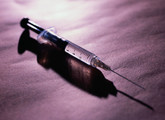Biosimilars/Research
Biosimilars dilemma over reference products
Global manufacturers of biosimilars have a dilemma on their hands concerning reference products. What to do to reduce the burden of data required in different countries and regions of the world to get their biosimilars onto the market?
Current and future issues surrounding biosimilars
Biological medicines are already becoming an increasingly important part of health care. With patent expiries on originator biological products, biosimilars are also increasingly become a part of this future [1]. In fact, by 2020 twelve of the top-selling biologicals will have lost patent protection, opening up an estimated US$24 billion in EU sales and US$30 billion in US sales [2].
Reimbursement of biosimilars
The evidence required to obtain marketing authorisation for a biosimilar by the regulatory authority is not always the same as that required by the reimbursement authority [1]. This can cause problems for biosimilars manufacturers when planning clinical trials in order to obtain both marketing and reimbursement approval.
Comparability studies and substitution of biosimilars
In order to demonstrate similarity between the biosimilar and the biological reference product, both products must be compared to satisfy quality, safety and efficacy requirements [1].
Biosimilars: demonstrating ‘similarity’
Most biological drugs are mixtures of closely related compounds, some of which are probably more active than others. Today, the state-of-the-art manufacturing struggles to deliver material that is similar to the prior batch from the same facility and team [1]. Identical is currently not possible, therefore ‘similar’ is the route that authorities in Europe and the US are going down.
Registration of biosimilars in Europe and the US
Europe is way ahead of the US in terms of biosimilars regulation. A legal framework for approving biosimilars in the EU was established in 2003 and guidelines for an abbreviated registration process were issued in 2006 [1].
EMA risk management plans may increase prescriber confidence in biosimilars
In the absence of observational (phase IV) data, EMA’s stipulation that all marketing applications for new generation biosimilars contain individual risk management plans may help to increase prescriber confidence in the compounds [1].
The cost-effectiveness of biosimilars
The biotechnology market is growing rapidly, driven by the imminent patent expiry of several major biologicals and enabled by the establishment of regulatory frameworks. The key driver for the biosimilars market is likely to be cost containment pressures in healthcare systems in the context of aging populations and of the current financial and economic crisis [1]. Because the medicines involved are so expensive, even a modest price reduction in percentage terms generates savings in the billions of euros over the EU as a whole [2].
Physician perceptions of generics substitution
How do physicians perceive generics substitution? Many patients do not communicate with their physicians regarding out-of-pocket expenses or medication choices. Therefore, understanding physicians’ perceptions about the quality and efficacy of generics could help to identify potential barriers to increasing the use of generic drugs [1].
Biosimilar epoetins: how similar are they?
As the patent expiry dates of the original erythropoietins drew near, much concern was expressed in 2004 about possible biosimilar competitors. Product quality, safety and efficacy of biopharmaceuticals are highly dependent on the processes of production, purification and formulation. How have these genuine concerns been answered by the EMA in granting marketing approval, and have any other problems come to light?













